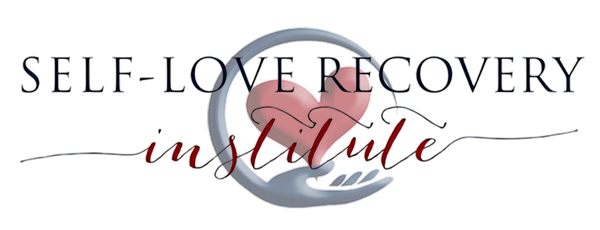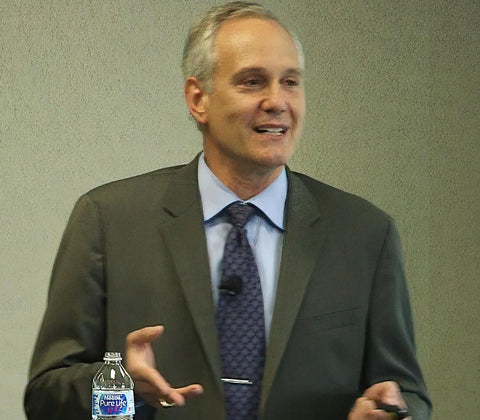Psychotherapist/Educator/Expert Witness/Presenter
Self-Love Recovery Institute CEO
“The Human Magnet Syndrome" Author
Codependency Cure™ Treatment Creator
When a therapist colleague and friend recently asked me to explain what Self-Love Deficit Disorder is and how to treat it, I panicked — although I love talking about my latest discoveries, especially my renaming of codependency to Self-Love Deficit Disorder. So I paused to think of the best response.
Instead, my second impulse was to skirt the question by explaining that the answers are best explained in my latest seminar video, the six-hour “Codependency Cure.” These discoveries organically materialized in my life because of my need to heal emotional wounds and tear down the emotional, personal, and relational barriers keeping me from experiencing self-love.
My third impulse, the best one, was to proudly and enthusiastically share my “children” with yet another person. People who know me well understand how my Human Magnet Syndrome, Codependency Cure, and Self-Love Deficit theories and explanations are byproducts of my family of origin issues (trauma), my rollercoaster journey to recover from it, and the joy of learning to live free from codependency. My explanatory creations are not just a set of theories I like to talk about but a personal mission that I plan to be on for the rest of my life.
Although I wasn’t excited about the prospect of talking shop at that moment, I tapped into a well of energy and enthusiasm that gave me the much-needed boost to provide a condensed rendering of my latest work. But this
time, I set a boundary: it would only be a 15-minute explanation! I figured since I had already given many radio interviews, written many articles, created training courses, and, of course, been a psychotherapist for 30 years, it would be a piece of cake.
“Self-Love Deficit Disorder” and “The Human Magnet Syndrome”
I did it with time to spare. Knowing that others might ask me the same question again or would benefit from a similarly condensed rendition of my conceptual and theoretical work, I created a written version of this discussion. The following are my 18 guiding principles of Self-Love Deficit Disorder and The Human Magnet Syndrome.
- “Codependency” is an outdated term that connotes weakness and emotional fragility, both of which are far from the truth. The replacement term, “Self-Love Deficit Disorder” or SLDD, takes the stigma and misunderstanding out of codependency and focuses on the core shame that perpetuates it. However, inherent in the term itself is recognizing the core problem of codependency and its solution.
- The absence of self-love results in deeply embedded insecurities that render people powerless to set boundaries or control their narcissistic loved ones. The SLD person with Self-Love Deficit Disorder is often oblivious or in denial about their dysfunctional relationship patterns with narcissists. To admit to it would require them to face their core shame and pathological loneliness.

- Pathological Narcissists (Pnarcs) have one of three Personality Disorders or have an addiction: Borderline Personality Disorder, Antisocial Personality Disorder, or Narcissistic Personality Disorder. The Pnarc addict will cease their narcissistic ways if they do not have one of the above personality disorders and they remain sober (abstinent of their drug of choice) and active in their recovery program.
- The SLD once was a child raised by a Pathological Narcissist parent who flew into fits of rage, anxiety, sadness, or depression if their immediate needs were not catered to or immediately met. This child emotionally survived by avoiding their narcissistic parent’s anger (narcissistic injuries) by morphing into the “trophy,” “pleasing,” or “favorite” child that the Pnarc parent needed them to be. This child grew up learning that safety and conditional love were available to them if they buried their own needs for love, respect, and caring while becoming invisible.
- Like the child who would become an SLD adult, the Pathological Narcissist suffered the same fate of being raised by an abusive, neglectful or depriving Pnarc parent. However, unlike the future SLD child, this child would not or could not find a way to please his narcissistic parent or provide them with pseudo-self-esteem, pride, or vanity. Even worst, another sibling could have beat them to “trophy status,” which would have rendered them useless to their narcissistic parent. Ultimately, this child was deprived of any form of conditional love, respect, and caring from his Pnarc parent. He most likely grew up experiencing that the only love he would receive is that which came from him, at the expense of others.

- The inherently dysfunctional SLDD/Pnarc “dance” requires two opposite but distinctly balanced partners: the pleaser/fixer (SLD) and the taker/controller (Pnarc). When the two come together in their relationship, their dance unfolds flawlessly: the narcissistic maintains the lead, and the SLD follows. Their roles seem natural because they have been practicing them their whole lives; the SLD reflexively gives up their power, and since the narcissist thrives on it (and control), the dance is perfectly coordinated. No one gets their toes stepped on. SLDs dare not leave their dance partner because their lack of self-esteem and self-respect makes them feel like they can do no better. Being alone is the equivalent of feeling lonely, and loneliness is too painful to bear.

- Men and women always have been drawn into romantic relationships instinctively, not so much by what they see, feel or think, but more by an invisible and irresistible relationship force. “Chemistry,” or the intuitive knowingness of perfect compatibility, is synonymous with the Human Magnet Syndrome. The chemistry force that brings compatibly opposite, but exquisitely matched, lovers together: SLDs and Pnarcs. Like two sides of a magnet, the caretaking and sacrificing SLD and the selfish and entitled Pnarcs are powerfully drawn together, sometimes permanently.

- SLDs are repeatedly attracted to or find themselves intractably in a relationship with a narcissist despite the lessons they keep willing themselves to learn. It is like they are addicted to riding rollercoasters, for which they remember the thrill and ecstasy but conveniently forget the terror and their subsequent promise never to do it again. Yet they keep getting back in line for another ride.

- SLDs feel trapped in their relationships because they confuse sacrifice and selfless caring with commitment, loyalty, and love. An irrational fear of abandonment, loneliness, and core shame fuels the SLD’s distorted thinking and value system.

- When an SLD sets a boundary, insists on fairness or mutuality, or attempts to protect themselves from harm, the Pnarc partner punishes them with some form of active or passive-aggressive retaliation. The actual consequence, or the threat of it, freezes the SLD inside their unhappy, dysfunctional relationships. Over time, the Pnarc achieves complete dominance over the relationship because they have systematically extracted any semblance of self-confidence and courage from the SLD.
- SLDD often manifests as an addiction. The enthralling emotional drama of dysfunctional relationships or the belief that the SLD can control a Pnarc is the drug to which SLDs become addicted. Despite losses and consequences, the SLD addict hypnotically pursues their drug of choice. Relapse is inevitable if the SLD should leave the Pnarc before resolving the underlying problems responsible for the addiction.

- Pathological loneliness and the fear of it drive SLDD addiction. It is SLDD addiction’s primary withdrawal symptom, which lasts between two to six months. Such toxic loneliness is excruciatingly painful and is experienced physically, emotionally, existentially, and spiritually. In the throes of pathological loneliness, the SLD feels isolated, unloved, unsafe, and fundamentally unworthy.
- Core shame drives pathological loneliness. It is the feeling of being fundamentally damaged, inadequate, or unlovable. Core shame was caused by attachment trauma.

- Attachment Trauma is caused by the traumatic childhood experience of being raised by an abusive or neglectful Pnarc parent. This form of trauma is primarily repressed and is beyond the SLD’s capacity to remember. Attachment trauma and post-traumatic stress disorder (PTSD) are similar mental health problems or are the same. Resolving this trauma requires a psychodynamic, family of origin, addictions, and trauma-informed psychotherapist.

- The Self-Love Deficit Pyramid illustrates why SLDD is not a primary psychological or emotional problem. Instead, it is a symptom of other underlying and more severe psychological problems. With resolving SLDD addiction, pathological loneliness, core shame, and, ultimately, the attachment trauma, the SLD will, perhaps for the first time, be able to love him- or herself.

- According to the rules of “relationship math,” the addition of ½ + ½ (an SLD and Pnarc) = 1, which is ½ of a relationship composed of enmeshed and dependent partners. But the addition of a 1 + 1 (two self-loving individuals) = 2, which is 1 whole relationship, comprised of mutually and reciprocally loving interdependent.
- If Self-Love Deficit Disorder or SLDD is the new diagnosis for codependency, we should make another such clinical designation to resolve the problem. Why should people carry around a negative term, like “recovering codependent” or “recovering SLD” for the rest of their lives? Therefore, the goal of SLDD recovery, or “The Codependency Cure,”™ is healing the trauma responsible for one’s self-love deficit (SLDD) and the acquisition of self-love or “Self-Love Abundance” or SLA.

- Self-love is the antidote to codependency or Self-Love Deficit Disorder. And since the human spirit is capable of astounding feats, then all the pain and suffering that it takes to achieve self-love is well worth the effort. George Eliot had it right: “It is never too late to be what you might have been.”
In closing, I would like to thank everyone who has asked me about my work. Through explaining my ideas and concepts to others, I have been able to hone in on the universal truths about which I am so devoted to teaching and writing.
ABOUT ROSS
Ross Rosenberg M.Ed., LCPC, CADC, is Self-Love Recovery Institute’s CEO and primary contributor. His internationally recognized expertise includes pathological narcissism, narcissistic abuse, and attachment trauma. Ross’s “Codependency Cure™ Treatment Program provides innovative and results-oriented treatment.
Ross's expert educational and inspirational seminars have earned him international acclaim, including his 22 million YouTube video views and 236K subscribers. In addition to being featured on national TV and radio, his “Human Magnet Syndrome” books sold over 150K copies and are in 12 languages. Ross provides expert testimony/witness services. More about Ross and his educational and inspirational work can be found at www.SelfLoveRecovery.com.
Join us on Facebook, Instagram, or Twitter: https://www.facebook.com/TheCodependencyCure https://www.instagram.com/rossrosenberg_slri






0 comments